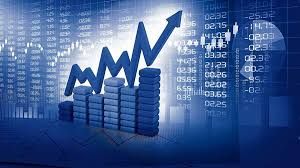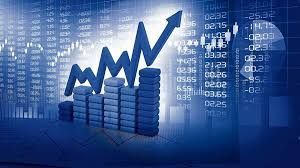RESEARCH REPORT: ECONOMIC OUTLOOK FOR THE US AND EUROZONE
US ECONOMY
STRENGTH OF THE US ECONOMY
1. The US economy is expected to experience a slight contraction until the end of 2023 and early 2024 before returning to its trend growth in spring 2024. This is supported by strong fundamental indicators, particularly the resilient labour market and an upswing in the housing sector.
2. A mild recession or a soft landing appears considerably more likely than a significant decline in real GDP.
3. Markets performed well in July, driven by a valuation expansion. US equities rose more than European equities, pricing in a scenario of low inflation and stable economic activity.
4. However, a return to very optimistic investor sentiment is making equity markets increasingly vulnerable, and we therefore see only limited potential in the coming months.
US INFLATION AND FEDERAL RESERVE POLICY
1. The US Federal Reserve raised its benchmark interest rates by 25 basis points to 5.25-5.50 %. It is likely that this was the final rate hike in the current tightening cycle.
2. Inflation in the US unexpectedly declined significantly from 4.0 % to 3.0 % in June. This decline has led to a decrease in expectations for further interest rate hikes by the Federal Reserve.
3. The effects of previous rate hikes will continue to dampen price pressures in the near future, due to the lagged nature of monetary policy.
## US Inflation and Economic Performance
US ECONOMY DEFIES RECESSION FEARS WITH STRONG SECOND-QUARTER PERFORMANCE
The US economy exhibited strong performance in the second quarter, growing faster than expected. This growth was bolstered by a resilient labour market that boosted consumer spending and led businesses to increase investment in equipment and construct more factories, thus potentially keeping a much-feared recession at bay.
Gross domestic product (GDP) increased at a 2.4% annualized rate last quarter, exceeding the 2.0% pace seen in the January-March quarter. This growth was fueled by consumer spending, which accounts for over two-thirds of US economic activity, and increased at a 1.6% pace in the second quarter.
A separate report from the Labour Department showed a decrease in initial claims for state unemployment benefits, which fell 7,000 to a seasonally adjusted 221,000 for the week ended July 22, the lowest level since February. Additionally, orders for non-defense capital goods excluding aircraft, a closely watched proxy for business spending plans, rose 0.2% last month.
US INFLATION
The personal consumption expenditures price index (PCE), excluding food and energy, advanced at a 3.8% rate. The PCE core inflation likely decelerated to 0.2% month-on-month in June from 0.3%. However, risks are to the downside following the print for Q2 2023, which showed PCE core inflation easing more than expected.
We also expect the employment cost index (ECI) - the Fed's preferred measure of wage pressure - to have risen by 1.1% quarter-on-quarter (4.6% year-on-year) in Q2 2023, a slightly slower pace than in Q1 2023. Despite the gradual easing, these figures remain elevated.
IMPACT OF THE FED'S POLICY ON THE US DOLLAR
The Federal Reserve's restrictive policy stance has resulted in very high US real rates and yields, which have historically been very supportive for the US dollar. Furthermore, the USD index is currently trading at a discount relative to its nominal rate advantage versus the rest of the G10 FX, and FX investors have recently gone short on the USD across the board for the first time since 2019. Historically, such oversold levels have preceded periods of recovery for the currency.
In the coming weeks, focus will be on the Q2 ECI and the core PCE deflator for June, as well as the Non-farm payrolls and ISMs for July and the July US CPI print. The USD should continue to follow the price action in the US fixed income market and the ebb and flow of global risk sentiment. The currency is likely to benefit if the US data support the view that the Fed is not yet done hiking rates, especially if this further hurts risk sentiment.
EUROZONE ECONOMY
ECONOMIC CONDITIONS IN THE EUROZONE
1. The Purchasing Managers' Index (PMI) for the Eurozone declined significantly in July, indicating a more substantial economic decline than anticipated.
2. We expect a very modest growth in the Eurozone for the remainder of 2023. However, once the downturn in the United States comes to an end, the Eurozone could potentially experience a rebound in growth surpassing its trend rate, starting in spring 2024.
INFLATION AND ECB POLICY
1. In June, the inflation rate in the Eurozone declined from 6.1% to 5.5%. This suggests a continued disinflationary trend.
2. The ECB is likely approaching the end of its tightening policy. The weak economy is tempering upward price pressures, and the impact of recent interest rate hikes is still unfolding.
3. As expected, the ECB raised its policy rates by 25 basis points and turned genuinely data-dependent, reflecting the high uncertainty surrounding the rate outlook as growth prospects darken.
MARKET DEVELOPMENTS
1. European equities are priced more inexpensively with higher economic risks, which holds positive surprise potential if the economy holds up better than expected.
2. However, an increasing number of profit warnings from the cyclical sectors and the first disappointments from larger technology companies indicate that not everything is rosy.
3. The Fed's recent interest rate decision and dovish repricing of policy expectations have led to the US dollar's continued weakness.
OUTLOOK
Given the current state of the US and Eurozone economies and the anticipated economic conditions, our outlook suggests that:
1. The US dollar will weaken further this year.
2. The ECB may pause their hiking cycle if inflation continues to slow.
3. In the Eurozone, the EUR/USD exchange rate is anticipated to be around 1.12 by the end of the year, only slightly higher than the current level. If the Eurozone recovers in economic performance next year, the Euro is expected to strengthen further, potentially appreciating to approximately 1.18 by the end of 2024.
4. We maintain our forecast that the deposit rate will peak at 4% in September, although this is a very close call as downside risks to economic activity are intensifying.
5. The US rate market expects the Federal Reserve to begin lowering rates by the March or May FOMC meetings of next year and to deliver around 125 basis points of cuts by the end of next year.
IMPLICATIONS FOR EUR/USD
Given the comprehensive data provided on both the US and Eurozone economies, as well as the respective monetary policy decisions of the Federal Reserve and the European Central Bank (ECB), the outlook for the EUR/USD can be interpreted as follows:
1. FED'S DOVISH STANCE: The US Federal Reserve has adopted a more dovish stance recently, which indicates that the recent rate hikes might be nearing their end. The Fed's data-dependent approach, combined with slowing inflation, suggests that they might pause their rate hikes in the coming months. A dovish Fed typically exerts downward pressure on the US dollar.
2. EUROZONE ECONOMIC CONDITIONS: The Eurozone is facing challenging economic conditions with a declining Purchasing Managers' Index (PMI) and weakening growth forecasts. However, the expectation of a potential rebound in growth by spring 2024 could offer support to the Euro.
3. US ECONOMIC STRENGTH: The US economy has exhibited resilience, with stronger than expected growth in Q2. This, combined with a robust labour market, may lend support to the US dollar, partially offsetting the effects of the Fed's dovish stance.
4. US INFLATION AND REAL RATES: The US inflation rate, as indicated by the PCE, has shown signs of deceleration. If inflation continues to ease, it reduces the impetus for further aggressive rate hikes by the Fed. High US real rates and yields, historically supportive for the USD, might provide some upward pressure. However, if the anticipated easing in inflation materializes, this could lead to a softening of the USD.
5. EUROZONE INFLATION AND ECB POLICY: The inflation rate in the Eurozone has shown a disinflationary trend. The ECB has started to adopt a more cautious approach, signaling the potential end of its rate hike cycle. This could provide support to the Euro in the short term, especially if the ECB pauses its rate hikes or adopts an easing stance.
6. INVESTOR SENTIMENT: The USD index is currently trading at a discount relative to its nominal rate advantage against other major currencies. This, combined with the fact that FX investors have recently gone short on the USD for the first time since 2019, implies a potential recovery for the USD. Such historical oversold levels often precede periods of currency appreciation.
7. EUR/USD EXCHANGE RATE PROJECTIONS: Given the economic and monetary conditions in both the US and the Eurozone, the EUR/USD exchange rate is expected to hover around 1.12 by the end of the year. However, as the Eurozone's economic performance potentially recovers in the coming year, the Euro is projected to strengthen, appreciating to approximately 1.18 by the end of 2024.
In summary, the combined effects of monetary policy decisions, economic growth, inflation trends, and investor sentiment in both the US and the Eurozone suggest a mixed outlook for the EUR/USD in the short term. However, in the medium to long term, given the potential economic recovery in the Eurozone and the dovish stance of the Fed, the Euro might appreciate against the US dollar.
IMPLICATIONS FOR GOLD
The provided data and the economic conditions in the US and Eurozone have several implications for the gold market:
1. FED'S DOVISH STANCE: The Federal Reserve's dovish stance, indicating a potential end to its current rate hiking cycle, is generally positive for gold. Higher interest rates increase the opportunity cost of holding non-yielding bullion, so a pause or decrease in rate hikes can make gold more attractive.
2. US ECONOMIC STRENGTH: The strength of the US economy might put downward pressure on gold. Historically, gold tends to perform better during times of economic uncertainty as investors seek safe-haven assets. The strong US GDP growth and robust labour market could potentially reduce the appeal of gold as a safe-haven asset.
3. US INFLATION AND REAL RATES: The deceleration in the US inflation rate may have mixed effects on gold. On one hand, gold is often viewed as a hedge against inflation, so lower inflation could decrease its appeal. On the other hand, lower inflation could lead to a pause in Fed rate hikes, which would be positive for gold. High US real rates and yields might apply downward pressure on gold prices, but if inflation continues to ease, this effect could be mitigated.
4. EUROZONE ECONOMIC CONDITIONS: The weak economic conditions in the Eurozone could potentially increase the appeal of gold as a safe-haven asset. If investors become concerned about the economic health of the Eurozone, they may increase their holdings of gold.
5. INVESTOR SENTIMENT: Gold ETFs have seen almost continuous outflows since regional banking crises and the US debt ceiling debate subsided. This suggests that many investors currently view the risks that gold is often used to hedge against (such as inflation or economic instability) as less pressing.
6. USD STRENGTH: Gold is generally inversely correlated with the USD, as a stronger dollar makes gold more expensive for holders of other currencies, potentially reducing demand. The current outlook suggests a mixed future for the USD, indicating that its influence on gold prices may be somewhat neutral in the short term.
In summary, the outlook for gold is mixed, with both potential upside and downside risks. The dovish Fed stance, potential for increased demand due to economic uncertainty in the Eurozone, and the deceleration of US inflation are all potentially positive for gold. However, the strong US economy, high US real rates and yields, and reduced demand for gold as evidenced by ETF outflows, could exert downward pressure on gold prices.
To answer all the question on inflation:
- Headline Inflation: This refers to the total inflation within an economy, including all goods and services. It's called "headline" because it's the main inflation figure reported in the media. Headline inflation can be heavily influenced by certain categories that tend to have volatile prices, such as food and energy.
- Core Inflation: This measure excludes certain categories—typically food and energy prices—that are known for their volatility. By excluding these categories, core inflation aims to provide a clearer picture of underlying, long-term inflation trends in an economy.
In terms of the provided data and its impact ( the image above ):
- The US economy is showing signs of strength with a robust labour market and unexpected growth. Inflation in the US has dropped from 4.0% to 3.0%, which might signal the end of the current tightening cycle by the Federal Reserve. The Fed's dovish stance could weaken the US dollar and potentially make gold more attractive as an investment.
- On the other hand, the Eurozone is experiencing weak economic conditions. However, there's an expectation of a potential rebound in growth in 2024. The ECB is also likely nearing the end of its rate hike cycle, which could support the Euro. Given these mixed signals, the EUR/USD exchange rate is expected to hover around 1.12 by the end of the year but may appreciate to approximately 1.18 by the end of 2024.
In the case of gold, there are both upward and downward pressures. Downward pressures come from a strong US economy and high US real rates, whereas the potential end of the Fed's rate hike cycle and economic uncertainty in the Eurozone might increase gold's appeal.





